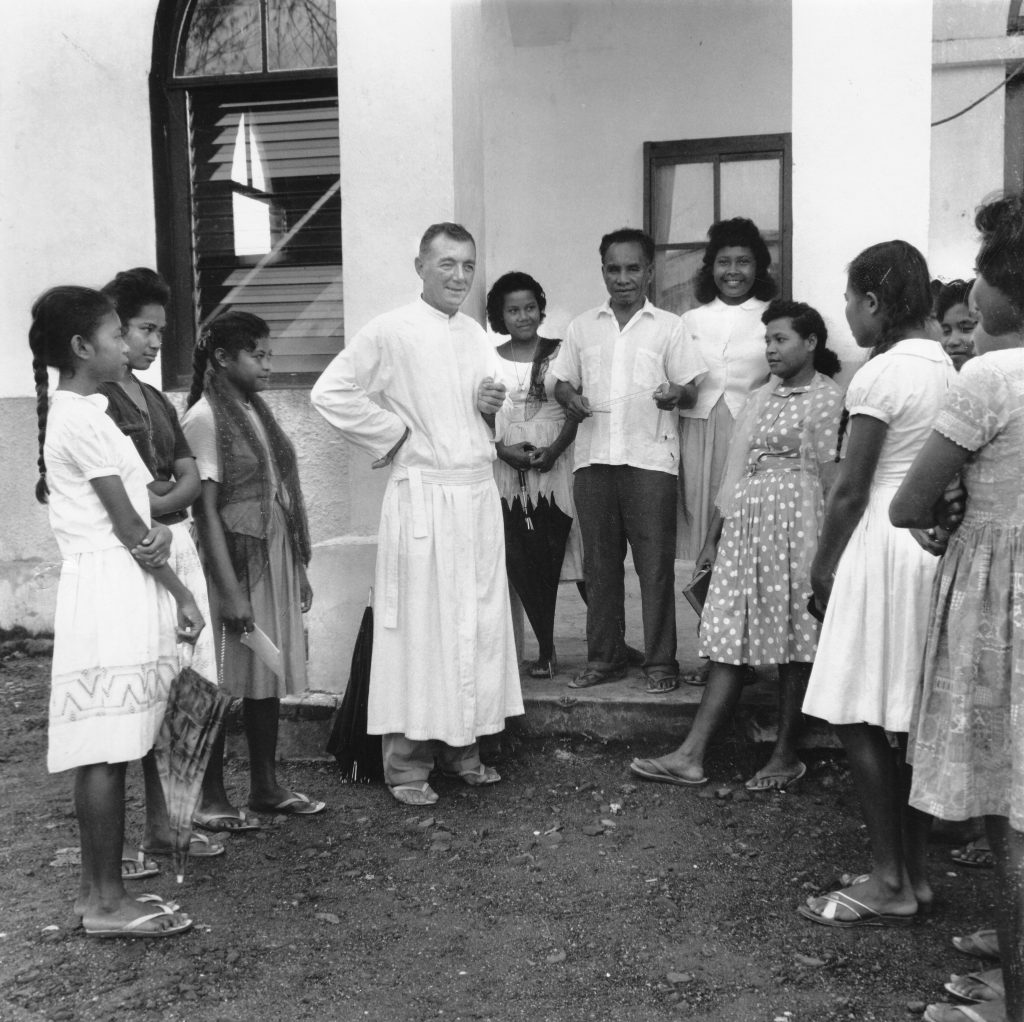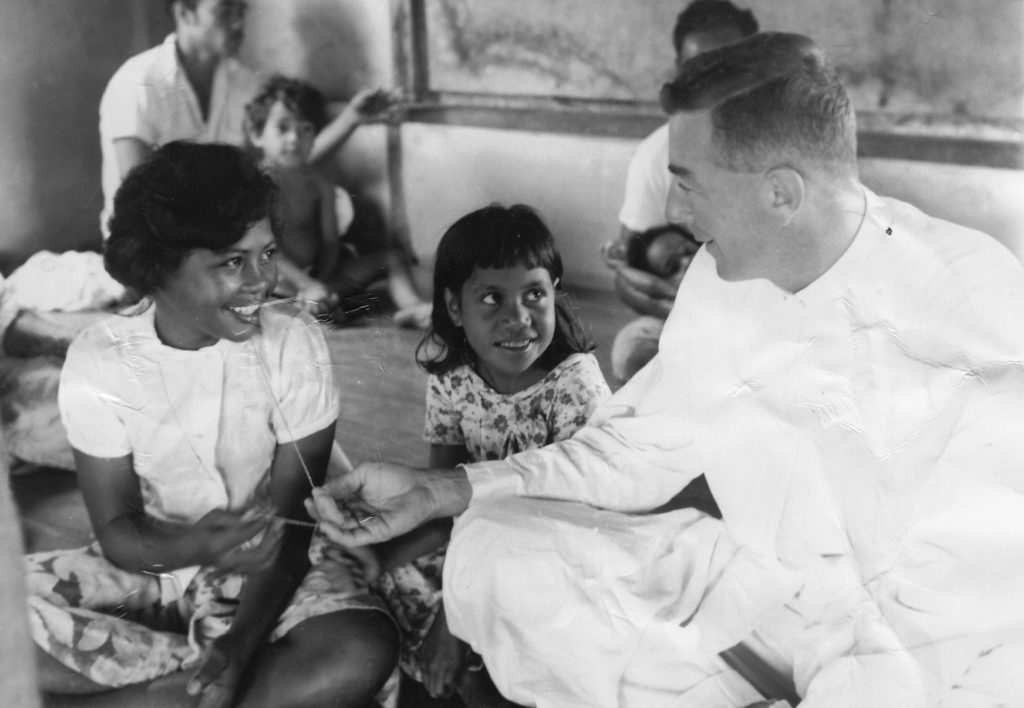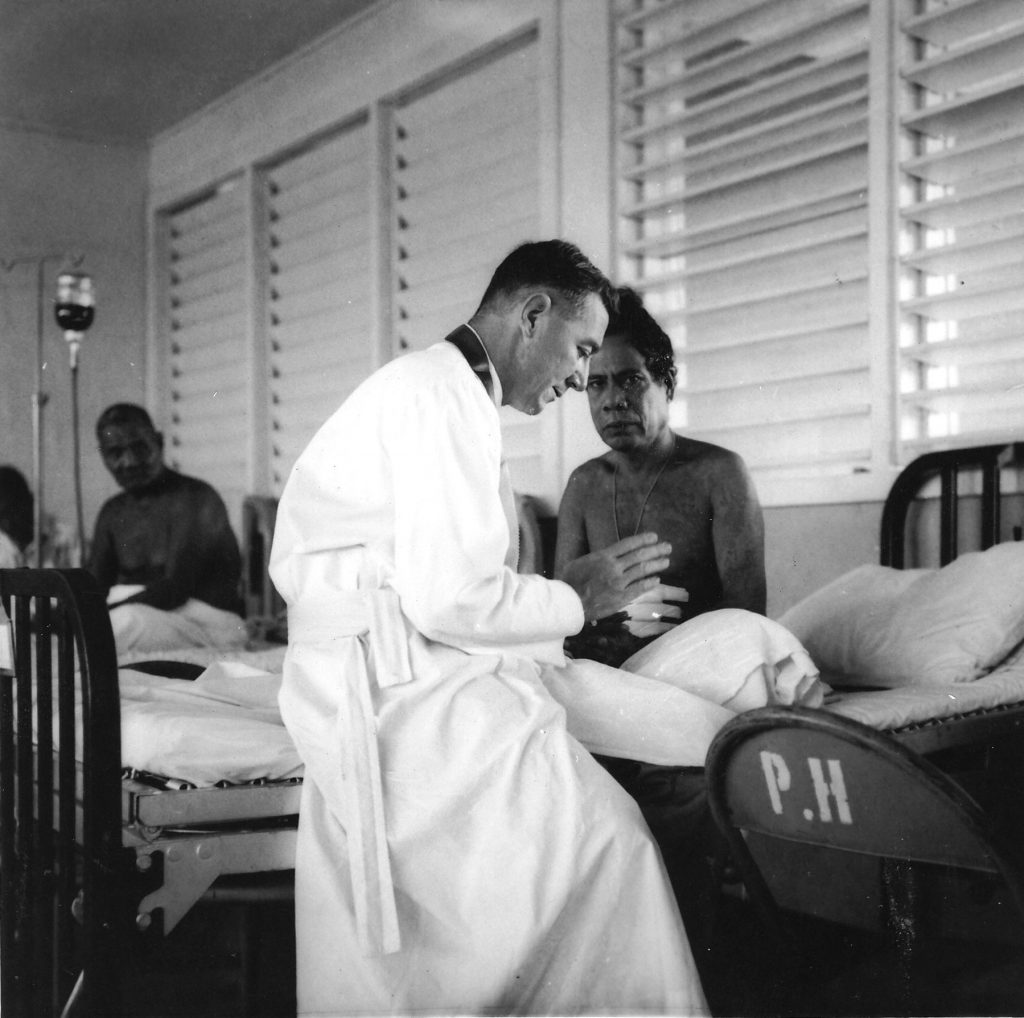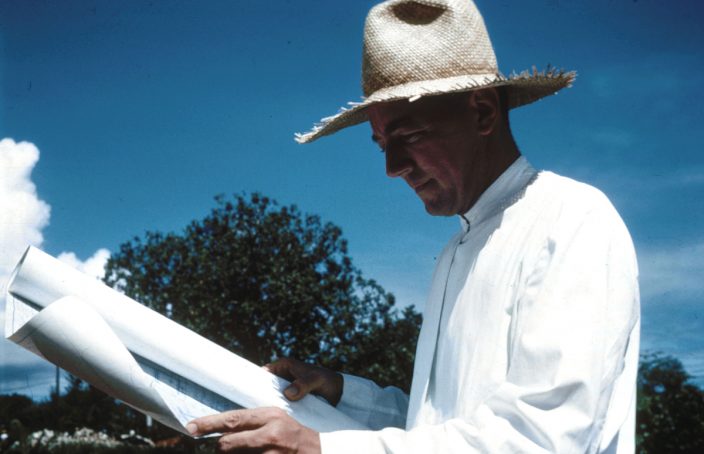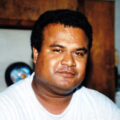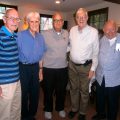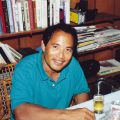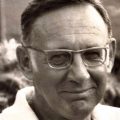Richard Hoar: Missionary, Mentor, and Then Some
Soon after I first met Dick on Palau in 1964, he had me pushing wheelbarrows full of wet cement up a ramp to be dumped on the second floor of the new Maris Stella School he was building. Dick came to Palau in 1958 as a classical missionary figure, the man who could construct churches and schools as easily as he can repair the engine of his jeep. Men of my age might have admired the versatility of that generation of Jesuits, but we could never have aspired to imitate them. Still, the cold beer tasted especially sweet after two hours of hauling cement.
Sometime during my few weeks on Palau that summer, I learned not only that Dick Hoar was a fellow Buffalonian, but that his family home was right across the street from St. James, the parish elementary school I attended. Who would have thought that a Buffalonian could master the consonant clusters and other intricacies of the Palauan language as well as Dick did! I remember how impressed I was when, some years later, I heard him, glass of scotch in hand, chatting in rapid-fire Palauan with three local government leaders.
Dick was a legendary figure for those of us who visited from time to time. Palauan students I knew from Xavier would liken him to the old screen idol Kirk Douglas. He was something of a dashing figure, even if he had to wear those floppy old hats of his to protect his sensitive scalp from the sun. He also hung out with a movie star or two in his time. In 1968, when ?Hell in the Pacific? was being filmed in Palau, Dick found a friend in Lee Marvin. The two of them spent many an evening talking and sometimes loudly arguing, as the local stories had it.
But there was a different side of Dick as well. I found in him a marvelous mentor, an older Jesuit who always had time and patience to spend with a nobody like me. He might have had a taste for scotch and late-night arguments, but his spiritual zeal was unmistakable. The same Palauans who might tell stories of his evenings on the town with Lee Marvin would also remark on how reverent his masses were and how happy he was to make home visits to the sick and neglected. He seemed to be a man who felt as much at home in Palau as in Buffalo, in the parish church as in a political discussion group.
Dick?s ministry in the islands ended in 1981, after 23 years
in Palau, when he decided to return to New York. When I heard the news that he
would soon be leaving us, I desperately hoped that he would change his mind and
stay. By that time, he had become more than a celebrity?a pal of Lee Marvin and
a movie star lookalike. He had become a key member of the mission team and a
model for so many of us.
Strangely enough, he remained connected to us even from afar. He faithfully read the weekly Palauan paper that his friends sent him. On my visits to Buffalo I always was summoned to St. Michael?s parish to update him on what was happening in Micronesia. The long conversation was as perky as always, but by then over a cup of coffee rather than a slug of scotch. I was always sorry to see the conversation end. The man had been such an important element in my growth and in the church work that we had been doing for so long. Imagine how we felt when we learned that he had passed away on February 22.
